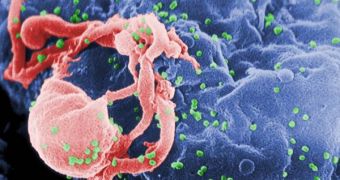Scientists from the University of Wisconsin-Madison (UWM) have recently announced the creation of synthetic protein-like mimics, which have the ability to stop unnecessary and unwanted chemical communication channels between cells. The new structures, created with a little help from molecular engineering techniques and the human immunodeficiency virus (HIV), have the ability to hamper protein communication between the viral cell and the host cells, thus disabling the pathogen from catching on. The technique could be used to prevent other diseases as well in the future.
Health experts and viral biologists say that influenza, Ebola and the severe acute respiratory syndrome (SARS) all spread to viruses that employ the same mechanisms such as HIV. In short, the virus is so small in size and contents, that it absolutely needs to attach itself and to communicate with the host cell. In order to do that, its proteins need to be able to communicate both between themselves, and with the proteins in the host cells. If these channels are blocked, the virus cannot replicate.
“There's a lot of information transfer that occurs when proteins come together, and one would often like to block that information flow,” UWM Chemistry Professor Samuel Gellman says. The science team has managed to successfully create a peptide-like molecule, which binds with the crucial HIV protein known as gp41. This physically blocks the virus from attaching itself to the host cell, which means it just floats around in the blood stream, with no real powers. Details of the new method appear in the August 17th issue of the journal Proceedings of the National Academy of Sciences (PNAS).
The new molecules, known as foldamers, are hybrids of natural and unnatural amino-acid building blocks. Scientists can precisely control the shape, structure and stability of the new constructs to the slightest detail, which is something they cannot do with natural amino-acids alone. “You don't have to limit yourself to the building blocks that nature uses. There's a huge potential here because the strategy we use is different from what the pharmaceutical and biotech industries now employ,” Gellman adds.

 14 DAY TRIAL //
14 DAY TRIAL //